|
"When redecorating your home, it’s important to remember the outside as well as the inside. Upgrading your outdoor space can make your home a more enjoyable space for both you and potential buyers—especially during summer months. “It’s useless to have a beautiful home inside and a mess outside,” says Jessica Yonker, editor of HGTVGardens.com and a contributor to HGTV.com’s blog Design Happens. “Pools, fire pits, and patios are always popular upgrades and additions, especially in summer,” Yonker says. “Not only do these upgrades make your home pretty, but beautifying your outdoors can also increase the value of your home.” Of course, cost is a huge factor, so budget carefully and have a solid plan in place. It’s safer to overestimate your budget than to plan an exact amount with no wiggle room, Yonker cautions. “When budgeting, make sure to factor in any taxes, service, and labor fees your project may incur, in addition to the materials,” she says. “Before you start a large outdoor project, you’ll want to think about how long you’ll be living in the home. You wouldn’t want to spend $20,000 on an outdoor kitchen if you’re not going to have a few years to enjoy it.” Popular outdoor upgrades include: Fire pits. Transform your back yard with a fire pit and make your yard the perfect place to relax on a lazy summer evening or chilly fall night. You can buy a portable fire pit in home improvement stores or install a custom-built, permanent pit. Outdoor kitchen. “For those who love to entertain, an outdoor kitchen is a must,” Yonker says. An outdoor kitchen can simply have a grilling area, or you can go all out with a gourmet grill, pizza oven, sink, stocked bar, and outdoor flat-screen television. Patios. To upgrade a poured concrete patio, consider replacing it with concrete pavers, which come in a variety of sizes, shapes, and colors. Also, consider adding a focal point like a paved walkway or fountain. Landscaping. “Adding a garden or planting trees are quick, inexpensive upgrades that can add beauty to your home,” Yonker says. Consider adding curb appeal and eye appeal with a splash of color and decorative planters on the front porch, patio, and decks. Paint. “You can also give your outdoors a new look by painting your house a new color or touching up the existing paint,” Yonker advises. A fresh coat of paint can inexpensively transform the look of your home and protect it from sun, rain, and wind, preserving your investment for years to come. Keep in mind that if you belong to a homeowners association, you’ll need check with it before you start any outdoor projects. The association may have restrictions on allowable paint colors, fence heights, and even types of trees you are allowed to plant. If you’re doing any digging, know where your utility lines are before you pick up the shovel. Call 811, a free, nationwide service that will connect you to a local center to arrange for someone to come out and mark your utility lines". Reference:
Becker, Eve. "Finance Blog." Equifax Finance Blog Increase Your Homes Value With These Five Outdoor Upgrades Comments. Http://blog.equifax.com, 8 July 2013. Web. 31 Mar. 2014. <http://blog.equifax.com/real-estate/increase-your-homes-value-with-these-five-outdoor-upgrades/>.
0 Comments
"For all birds, water is essential to life. They need it daily for drinking as well as bathing. When you have the opportunity to observe wild birds in water, it is immediately evident how much they enjoy it. A simple bath looks like play, and it always appears to be a joy. In the wild, birds get their water from wherever they can find it… ponds, puddles, and even the cupped leaves of plants after a rain. You can bring the beauty of local and transient birds into your life when you offer them access to water near your home or apartment. If you are able to accommodate a man-made stream or pond on your property, they will soon seek it out and return frequently. But for many individuals, space considerations rule these out. Fortunately, a birdbath can be installed virtually anywhere. The Style of Your Birdbath Makes A Difference The most popular birdbaths are shallow basins. They require little maintenance, and birds are comfortable in them. A shallow birdbath, or one with a gentle slope to the middle, enables them to wade in. The deepest level should not be more than three inches. Because birds like to have secure footing, the bottom of the basin-style birdbath should not be too smooth – textured surfaces are the most desirable. If you can add a dripper to the birdbath, it may attract even more birds, since they love moving water. Placement A birdbath will not be popular if it is placed in the middle of an open yard where birds will feel vulnerable. A wet bird cannot fly fast, and needs close cover from predators. Instead, place your birdbath near an "escape route" – a tree, shrub, or fence where birds can take cover if startled. Placed atop a pedestal, a birdbath offers a sense of security and stabililty. Also popular are birdbaths designed to hang from a tree. When positioning your birdbath, think also of yourself. Place the birdbath where you can see it from indoors… from your desk, dining room, or kitchen. To make your birdbath easy to clean and refill make sure it is within easy reach of your garden hose. Maintenance Change the water every few days, or even every day in hot weather. Dump it out or rinse it out with a strong stream from your hose. Use a bird-safe birdbath cleaner weekly to remove any debris and built-on residue". Reference:
Dr. Foster & Smith Educational Staff. "Birdbaths Overview." Backyard Birdbaths: Attracting Wild Birds with Bird Baths & Bird Bath Fountains. Drfosterandsmith.com, n.d. Web. 28 Mar. 2014. <http://www.drsfostersmith.com/pic/article.cfm?aid=1301>. "A wonderful way to enhance the beauty of your garden is to install a solar powered garden fountain. Compared to traditional electric fountains, solar powered garden fountains allow you to be gentle on the environment and to reduce your running costs to practically nothing. Maintenance is simple, too, with no wiring to look after. And yet a broad range of prices and styles are available.Setting up a solar powered garden fountain is easy and care of these fountains is minimal once installed. Want to use your solar powered garden fountain at an evening party? One option is to install a battery backup for working when the sun is not shining. Weekly maintenance is simple. Panels may accumulate dust or dirt, which can easily be wiped off. Once installed, if you find the pumps' power is not to your satisfaction, you may need to reposition the solar panels somewhat to increase maximum solar energy. It's also possible to add extra solar panels if you want to increase power to the pumps. Just note that water jet intensity will fluctuate according to the presence of sun throughout the day, and of course be lower on cloudy days. You can buy solar powered garden fountains with panels and fountain all in one unit, or purchase a model that allows you to place the panels at a distance, connected by a cord. Either way the panels' position needs to be where they can get maximum sunlight. If setup is separate, this allows you to place the fountain in any location, sunny or not. The best benefit, once the solar powered garden fountain is installed, is sunlight is free and summer time use has no limits. Since there is no need to place the fountain close to an electric supply, installation can be at any distance. This is especially ideal for large gardens. The only disadvantage is total dependence on sun; solar powered garden fountains work best on bright sunny days. Performance will slow down on cloudy days. Once the freezing chills of winter arrive, it's best to move the unit indoors to prevent damage from snow and frost. Extremely low temperatures could crack the bowls of the foundation. Solar powered garden fountains are designed for sunny locales with mild winters. They come in a variety of styles; some float, others are placed on solid surfaces, but are the most cost-effective way to enhance your garden, harnessing one of the planets most renewable energy source, sunlight. Make your garden truly green, go solar". Reference:
Hessman, Scott. "New Gardening Trends: Solar Powered Garden Fountains." Yahoo Contributor Network. Voices.yahoo.com, 16 Nov. 2011. Web. 25 Mar. 2014. <http://voices.yahoo.com/new-gardening-trends-solar-powered-garden-fountains-10428209.html?cat=32>.
Reference:
LaLiberte, Kathy. "How to Create Sensational Pots and Planters." Gardeners Supply. Gardeners.com, n.d. Web. 20 Mar. 2014. <http://www.gardeners.com/Planters-That-Stand-Out/5325%2Cdefault%2Cpg.html>.
Reference:
Mpoche4. "Fleur De Lis - Significance in LA (incl. Saints & New Orleans)." HubPages. Hubpages.com, 5 Jan. 2012. Web. 19 Mar. 2014. <http://mpoche4.hubpages.com/hub/Fleur-de-Lis-Everything-You-Want-to-Know>. "Adding a bird bath to a garden area creates a decorative feature while promoting conservation of wild birds and other wild creatures. Bird baths create a water source for birds and other wild visitors to a garden. Knowing how to landscape around a bird bath can help you safely provide for visiting birds while creating a beautiful display in your garden. Proper Location for a Bird Bath A spot near trees and bushes is ideal for your bird bath. This location will make it more accessible to the wild birds that will visit and make use of the feature. Placing the bird bath in a sunny location gives you a large variety of plant possibilities around the bird bath but an area that receives a combination of sun and partial shade throughout the day would be an ideal choice. A Foundation for Your Bird Bath A paving stone is a good choice to set the bird bath on. Placing your bird bath on a paving stone will provide stability and a flat surface as well as block out some of the weeds directly against the base of the bird bath. Create a Pathway Around the Bird Bath By creating a pathway around your bird bath, you will be able to get close for cleaning and regular maintenance. Arrange paving stones around the bird bath and if you prefer the stones to be level with the ground, dig out a shallow indention in the shape of each stone. Level the dirt and place the paver in the spot. Add more dirt to make the stone level. Planting Around the Bird Bath In order to deter predators that will be looking at your visiting birds as tasty snacks (domestic cats are the biggest predator in my yard), keep a clear area of about 10 feet in diameter around the bird bath. This open area allows birds to make use of the water without predators being able to sneak up on them. Add some of your favorite plants to provide food and shelter for the wild birds. Some of my favorites are sunflowers and lilac bushes. Sunflowers will provide seeds and lilac bushes will provide shelter. Choose appropriate plants for the sun exposure near your bird bath. Provide Feeding Stations Around the Bird Bath Tall shepherd hooks can be placed to hang bird feeders in the area but still position them away from the bird bath. Do not place bird feeders close enough for dropped seeds to fall into your bird bath or you will be spending extra time cleaning it out. It is best to create a combination of feeding stations at various heights for the many birds that may visit - hummingbirds, goldfinches, cardinals, and more. Hang suet feeders, platform feeders, hummingbird feeders and other types of feeding stations to attract wild bird to the area of your bird bath. Create a Spot for You to Watch the Birds that Visit Your Bird Bath A bench or seat of some type should be placed at least 10 to 20 feet away from your bird bath. This distance will allow you to watch the birds visiting your bird bath without scaring them away. I have a garden swing that I sit in to watch the critters that visit my wildlife garden. Listening to the birds is a favorite summer pastime and I look forward to it daily. Miscellaneous Needs for a Bird Bath A rock placed in the center of your bird bath will give the birds something to perch on while they drink or bathe. Be sure the water level in your bird bath is never more than two inches deep and never add any chemicals to the water". Reference:
Morris, Tammy Lee. "Tips for Landscaping and Setting Up Your Bird Bath." Yahoo Contributor Network. Voice.yahoo.com, 19 June 2010. Web. 18 Mar. 2014. <http://voices.yahoo.com/tips-landscaping-setting-bird-bath-6424658.html?cat=6>. "A curious thing is happening among American shoppers. More people are taking a moment to flip over an item or fish for a label and ask, is it "Made in the USA?" Walmart, the nation's largest retailer, earlier this year announced it will boost sourcing of U.S. products by $50 billion during the next 10 years. General Electric is investing $1 billion through 2014 to revitalize its U.S. appliances business and create more than 1,500 U.S. jobs. Mom-and-pops are also engineering entire business strategies devoted to locally made goods — everything from toys to housewares. And it's not simply patriotism and desire for perceived safer products which are altering shopping habits. The recession, and still flat recovery for many Americans, have created a painful realization. All those cheap goods made in China and elsewhere come at a price — lost U.S. manufacturing jobs. A growing pocket of consumers, in fact, are connecting the economic dots between their shopping carts — brimming with foreign-made stuff — and America's future. They're calculating the trade-offs of paying a little more for locally-made goods. "The Great Recession certainly brought that home, and highlighted the fact that so many jobs have been lost," said James Cerruti, senior partner for strategy and research at consulting firm Brandlogic. "People have become aware of that." "'Made in the USA' is known for one thing, quality," said Robert von Goeben, co-founder of California-based Green Toys. All of their products from teething toys to blocks are made domestically and shipped to 75 countries. "We are reaching a tipping point, where Americans are relearning its competitive advantage," von Goeben said. "It's not about the cheapest product, but the best quality product." For many consumers, affordability has driven the bulk of purchasing decisions. Businesses in turn have ventured abroad for cheap labor and specific manufacturing skills to keep prices down. So what's driving big and small businesses to increase sourcing of U.S. products — beyond the obvious good PR? In short, a shift in global manufacturing that's in the early stages. A combination of factors including rising labor costs are eroding China's cost advantage as an export platform for North America. Mexico, meanwhile, is rebounding as a manufacturing base, and wages there will be significantly lower than in China, according to a Boston Consulting Group report. By 2015, BCG forecasts that for many goods destined for North American consumers — manufacturing in some parts of the U.S. will be just as economical as manufacturing in China. For years, the main attraction of China outsourcing has been access to low-cost labor. But pile on related business costs such as transportation of goods, duties and industrial real-estate expenses, and the global manufacturing landscape is no longer China-dependent. Domestic manufacturing, meanwhile, is on the mend. The pace of growth in the U.S. manufacturing sector picked up to its fastest rate in more than a year and a half in February, as new orders continued to accelerate. And imported goods — at least in footwear and apparel — are retreating slightly. While more than 97 percent of apparel and 98 percent of shoes sold in the U.S. are made overseas, U.S. imports in those two categories in 2011 declined for the first time ever since such data has been tracked by the American Apparel & Footwear Association. "The cost competitiveness of U.S. manufacturing is on the rise," said Cerruti of Brandlogic. Made in the USA Of course, plenty of goods are still made abroad. And many Americans are broke, jobless or underemployed four years after the 2008 economic crisis. An unemployment measure that factors in those who have quit looking for jobs, as well as those working part-time for economic reasons, is at 14.4 percent. For many, buying "Made in the USA" is a luxury they can't afford. USA Love List Despite many shoppers' thin wallets, there's a growing appetite for domestically-made goods. Blogger Sarah Wagner has turned her passion for "Made in USA" products into a successful website. USA Love List is devoted to sourcing and showcasing where to buy domestically-made items, ranging from lip gloss to pet food. She regularly scans the aisles of big retailers such as Costco and Target for American-made goods. Site traffic has mushroomed since USA Love List launched in November 2011. "There's clearly a hunger for this sort of information," said Wagner, based in Philadelphia. "Companies have no idea how much Americans want to support American companies. They want to get behind their neighbors and communities to make sure those jobs stay there. It's struck a nerve with a lot of people," she said. American-Made Green Products Among the growing piles of American-made goods, many are green with recycled materials. Turns out it's easier to manufacture green products domestically because sourcing of recycled materials including recycled plastic is particularly plentiful and transparent in the U.S., said Jenna Sellers Miller, president of Architec Housewares, a 9-employee housewares business, based in Delray Beach, Fl. Some of Architec's EcoSmart line of products are sourced domestically. The products are available at Target, Macy's and Bed Bath & Beyond. "We're getting appointments with retailers who just want to see our 'Made in the USA' products," Miller said. Domestically sourced recycled materials and a broader commitment to the environment shape Green Toys business strategy as well. With their factory and warehouse 10 miles apart in northern California, they also cut transportation costs and related emissions. The 12-employee company also creates a ripple effect of jobs including supporting local drivers, shipping and packaging companies and testing labs. "We could not have started this company anywhere else," von Goeben said. "This is a uniquely American company." Later this year, Green Toys will ship its first batch of toys from northern California to China. Said von Goeben, "It's the irony of all ironies.'" Reference:
Wee, Heesun. "Made in the USA: More Consumers Buying American." CNBC.com. Cnbc.com, 6 Mar. 2013. Web. 18 Mar. 2014. <http://www.cnbc.com/id/100519468>. "When most people think about New Orleans homes, they imagine outdoor spaces -- cast iron railings and lush, private courtyards. And those are absolutely magnificent. But, New Orleans interiors are pretty special too. With the city’s mix of French, Spanish, African, Haitian, and American Low-Country heritage, nothing is really inappropriate. I've even seen crumbling plaster become a decorative element. But, for that quintessential New Orleans style -- whether you prefer an apartment in the French Quarter, a colorful shotgun cottage, or a grand manor in the Garden District -- mix in some of these: Ornamental Iron If you don't have that French Quarter balcony with the cast iron railings, you can still enjoy decorative ironwork. Hang a gate or fence section on the wall as art or use it as a headboard. Top a three-sided balcony piece with glass or marble to make a console table". Classical Urns and Garden Statuary Reference:
French, Leah. "Get the Look: New Orleans Style." About.com Flea Markets & Yard Sales. About.com, n.d. Web. 17 Mar. 2014. <http://fleamarket.about.com/od/stylestrends/tp/neworleansstyledecorating.htm>. "Sometimes fresh, clean water is hard for a bird to find. You can make a bird's day simply by offering a drink and a bath. Parent birds will often bring their babies to the bath after they fledge and show them where it is. Like the baby robin getting its first bath. Water will actually attract more species of birds than feeders will. Birds such as wrens, catbirds, and waxwings, who eat insects or fruit, don't visit most feeders. But a birdbath attracts all kinds of birds. Bluebirds, robins, catbirds, warblers and thrushes. We've even watched screech owls drinking from a birdbath right in town at dawn. Put your birdbath in your garden, and the birds will find it quickly. We took the photo at left, of bluebirds and cedar waxwings, 15 minutes after we first filled our homemade birdbath. We hollowed out a shallow basin in a section of a pine log. It was so heavy that we had to roll it into place. And it was rough, but it was a major hit with the birds. It was a hit with us, too. Watching birds at the birdbath brings great happiness to a home. It's one of the easiest ways to bring birds up close, where the whole family can get a really good look and enjoy their beauty. What kind of birdbath is best? Shallow No deeper than three inches at the center. It should be even shallower at the edge, so that a bird can ease its way in. Many birdbaths are way too deep. If you have one that's too deep, you can put rocks in it to raise the bottom. However, it will require you to work a little harder to keep the water clean. Rough bottomed Birds don't want to lose their footing. They don't like a glazed, slippery bottom. Cement is good, but it's heavy and hard to handle. Some of the new fiber-and-resin baths are amazingly lightweight, and they have a rougher texture, that makes birds feel secure. Drippy or sprinkly The plink or splash of moving water is pure invitation to birds. It dramatically increases the number of species that visit a birdbath. For example, hummingbirds would never wade into the bath the way a robin does, because hummingbirds bathe only in flight. But I have watched hummers zipping back and forth through the drips, timing their flights so that they catch a water drop on their backs on each pass. Sun power There are also baths available now with solar-powered spray features, such as the Solar Spa bath shown at right. We have one of these at the Birdwatching Dot Com garden, and we love to watch the birds come visit it. To upgrade a regular birdbath to a moving-water feature, arrange a garden hose so that its water trickles or drips into the bath. You can turn a still-water birdbath into a live-water bath by putting an inexpensive Water Wiggler in it. This is the same unit that makes the Water Rippling Birdbath work, but it's just the wiggler part. You put it in your own birdbath. Some people make a 1/2-inch hole in the bottom of a bucket and plug it with a bit of cloth, and suspend the bucket over the birdbath. The dripping water makes plinking sounds that birds can't resist. You can also install a small spray fountain designed for birdbaths. And we've seen a solar spray pump kit that you can add to an existing bath. Bath AttractionsKindness is a birdbath Sometimes fresh, clean water is hard for a bird to find. You can make a bird's day simply by offering a drink and a bath. Parent birds will often bring their babies to the bath after they fledge and show them where it is. Like the baby robin getting its first bath. Water will actually attract more species of birds than feeders will. Birds such as wrens, catbirds, and waxwings, who eat insects or fruit, don't visit most feeders. But a birdbath attracts all kinds of birds. Bluebirds, robins, catbirds, warblers and thrushes. We've even watched screech owls drinking from a birdbath right in town at dawn. Put your birdbath in your garden, and the birds will find it quickly. We took the photo at left, of bluebirds and cedar waxwings, 15 minutes after we first filled our homemade birdbath. We hollowed out a shallow basin in a section of a pine log. It was so heavy that we had to roll it into place. And it was rough, but it was a major hit with the birds. It was a hit with us, too. Watching birds at the birdbath brings great happiness to a home. It's one of the easiest ways to bring birds up close, where the whole family can get a really good look and enjoy their beauty. What kind of birdbath is best? Shallow No deeper than three inches at the center. It should be even shallower at the edge, so that a bird can ease its way in. Many birdbaths are way too deep. If you have one that's too deep, you can put rocks in it to raise the bottom. However, it will require you to work a little harder to keep the water clean. Rough bottomed Birds don't want to lose their footing. They don't like a glazed, slippery bottom. Cement is good, but it's heavy and hard to handle. Some of the new fiber-and-resin baths are amazingly lightweight, and they have a rougher texture, that makes birds feel secure. Drippy or sprinkly The plink or splash of moving water is pure invitation to birds. It dramatically increases the number of species that visit a birdbath. For example, hummingbirds would never wade into the bath the way a robin does, because hummingbirds bathe only in flight. But I have watched hummers zipping back and forth through the drips, timing their flights so that they catch a water drop on their backs on each pass. Sun power There are also baths available now with solar-powered spray features, such as the Solar Spa bath shown at right. We have one of these at the Birdwatching Dot Com garden, and we love to watch the birds come visit it. To upgrade a regular birdbath to a moving-water feature, arrange a garden hose so that its water trickles or drips into the bath. You can turn a still-water birdbath into a live-water bath by putting an inexpensive Water Wiggler in it. This is the same unit that makes the Water Rippling Birdbath work, but it's just the wiggler part. You put it in your own birdbath. Some people make a 1/2-inch hole in the bottom of a bucket and plug it with a bit of cloth, and suspend the bucket over the birdbath. The dripping water makes plinking sounds that birds can't resist. You can also install a small spray fountain designed for birdbaths. And we've seen a solar spray pump kit that you can add to an existing bath. Where should a birdbath be located? Not where cats can hide. Cats like to lie in wait beneath shrubbery or behind a concealing object and then pounce on the birds when they're wet and can't fly well. So put your birdbath at least five to ten feet from such hiding places. Give the birds a chance to see the cat coming. With an escape route. The ideal location is under some branches that hang down within two or three feet of the bath. A wet bird can flutter a few feet up to the safety of the leaves. On a pedestal. It's easy to see from the house, easy to clean, and somewhat safer from predators. If you locate your bath on the ground, it's important for the birds to have overhanging branches. Within reach of a hose. Make your birdbath easy to clean and refill. But locate your birdbath away from your feeding station, because seeds and droppings would soil the water quickly. Change the water every few days, or even every day in hot weather. Dump it out or squirt it out with the hose. I keep a scrub brush outside with my gardening tools, so that I can brush out any algae that begins to form. In view from a window. Don't forget to put yourself in the picture. Place the birdbath where you can see it from indoors, from your desk, dining room, or kitchen sink. Or locate it in your garden. Nothing is more decorative in a garden than a father bluebird bringing his newly-fledged young and introducing them to the birdath. A bird in the bath is the soul of enjoyment. The sight of it, even a chance glimpse through the window, will provide you too with a splash of happiness". Reference:
Porter, Diane. "Bath Attractions." Birdbaths, by Diane Porter. Birdwatching.com, 2010. Web. 15 Mar. 2014. <http://www.birdwatching.com/tips/birdbaths.html>. |
AuthorArchives
January 2016
Categories
All
|
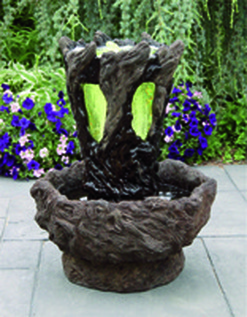

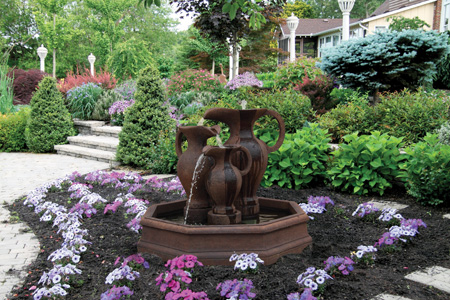
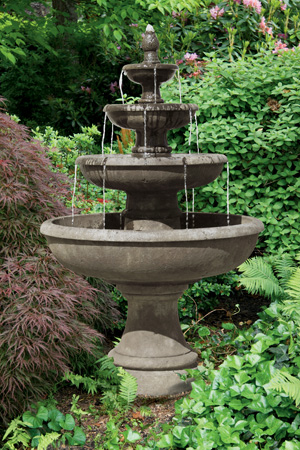
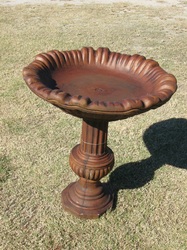
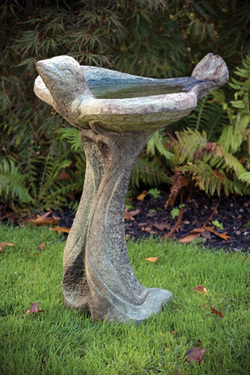
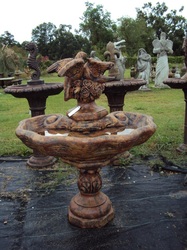
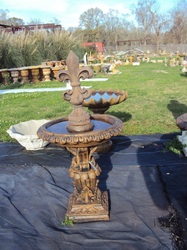
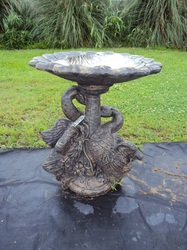
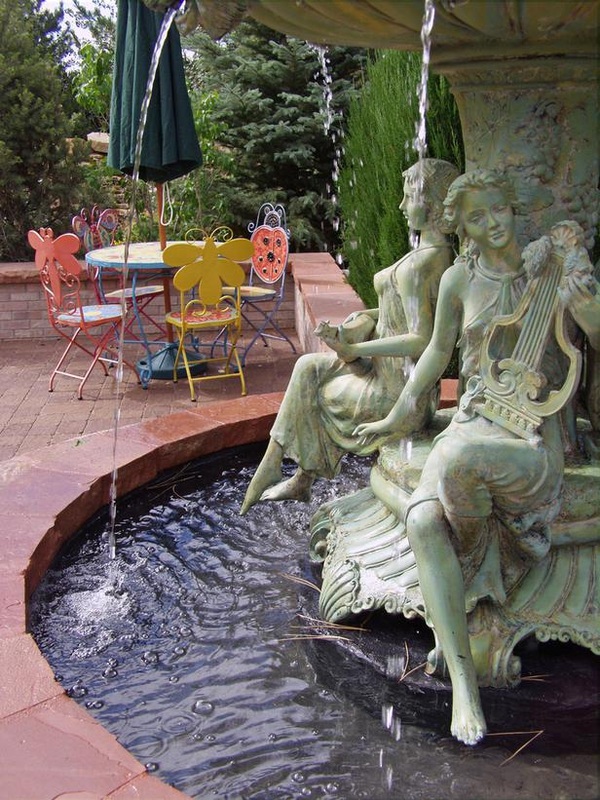
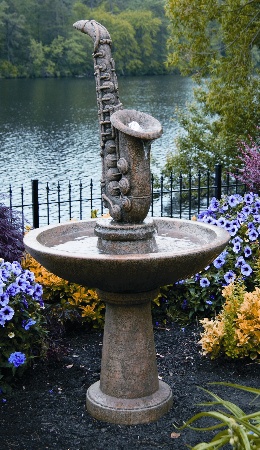
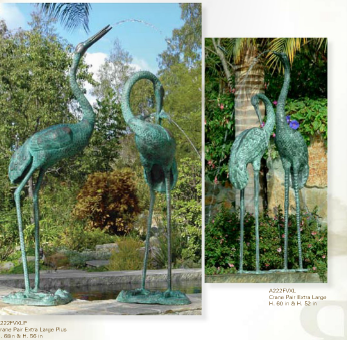
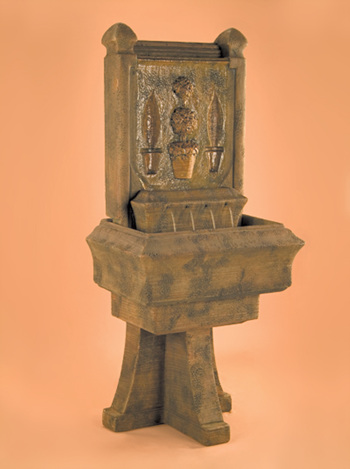
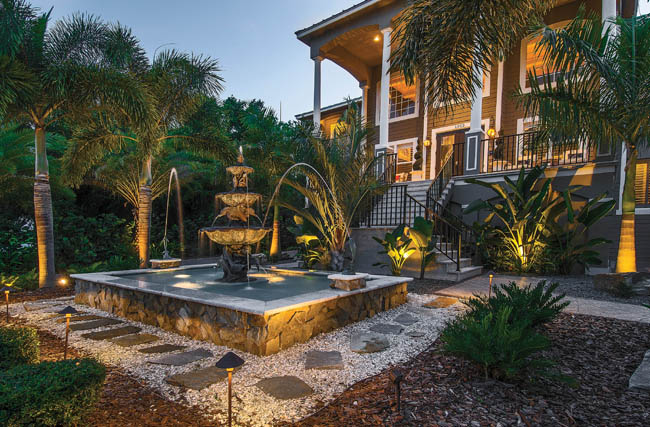
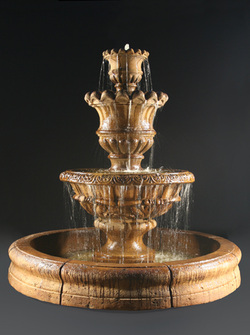
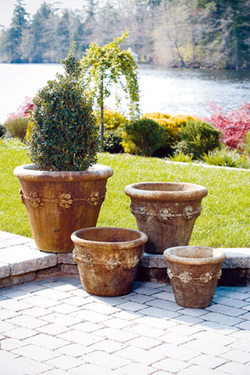
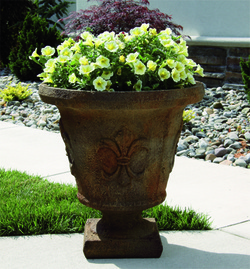
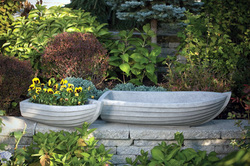
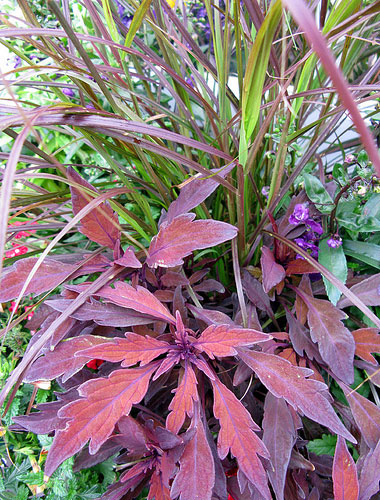
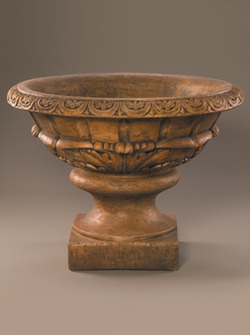
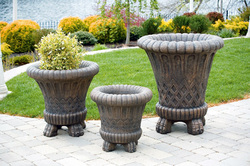
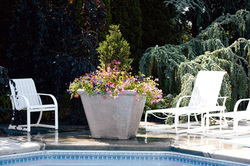
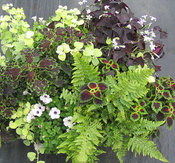
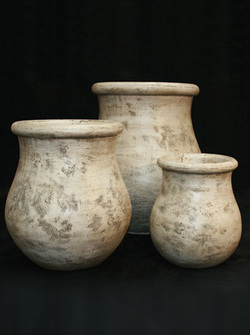
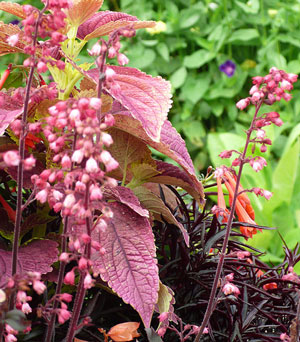
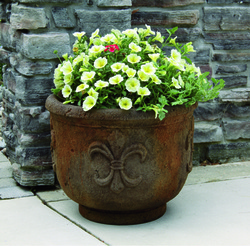
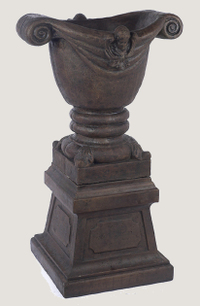
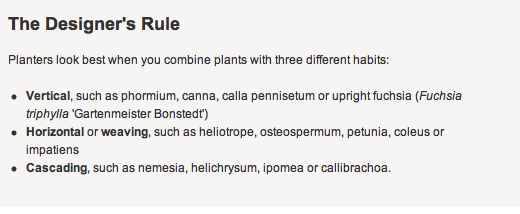
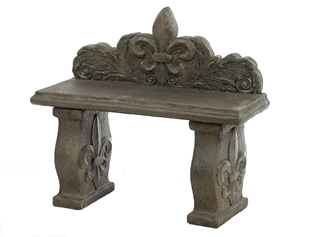
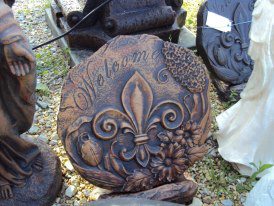
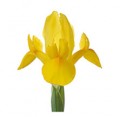
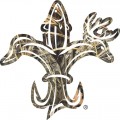




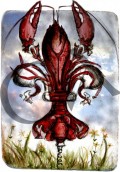
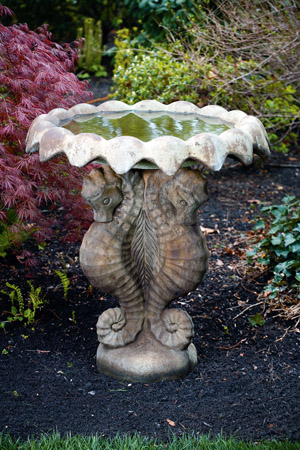
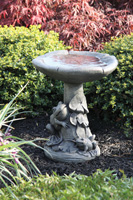
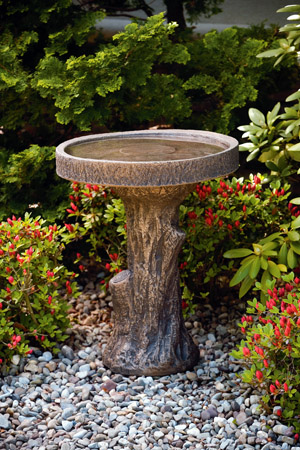
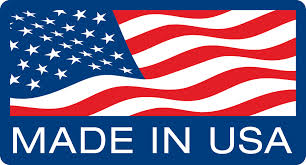
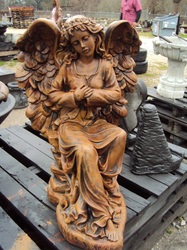
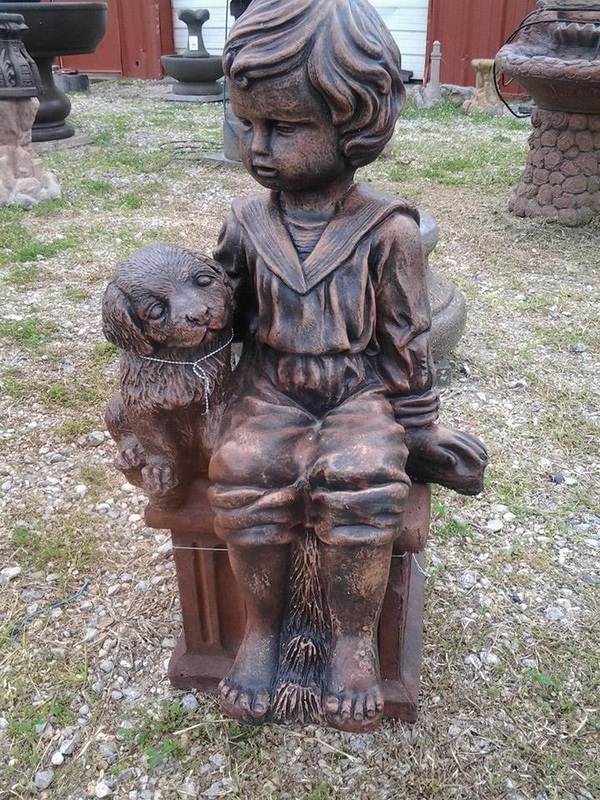
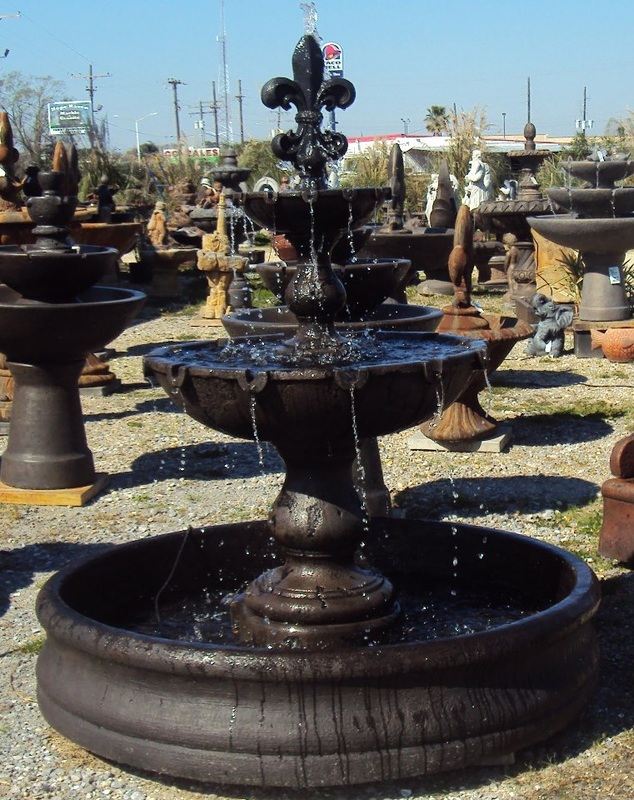
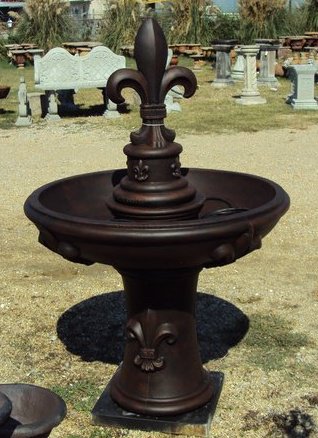
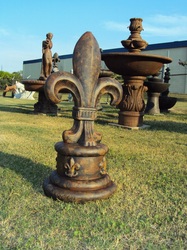
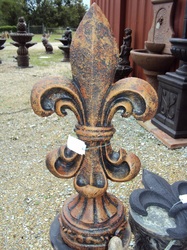
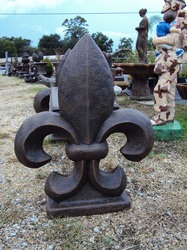
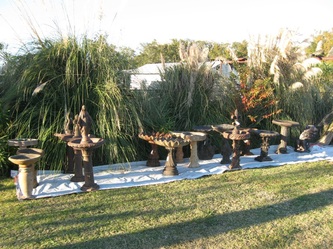
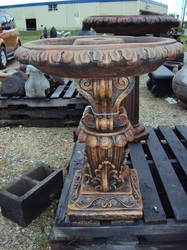
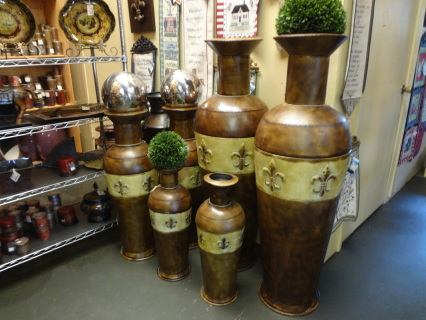
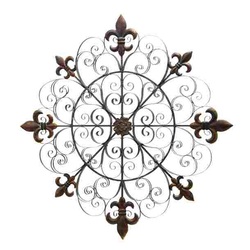
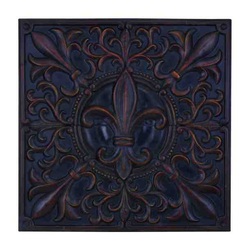
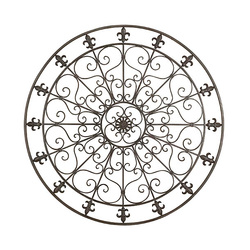
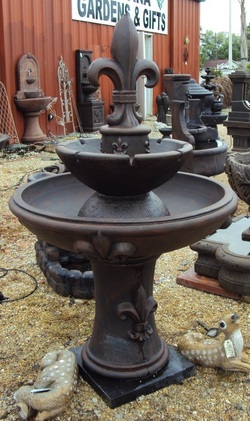
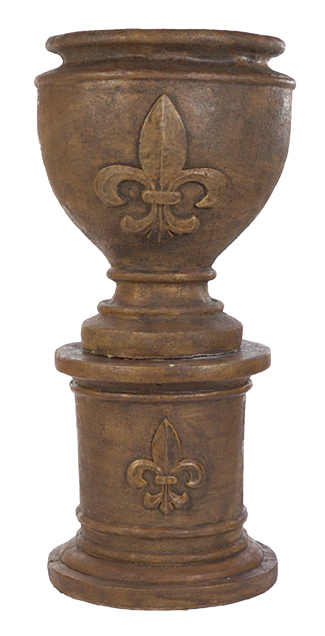
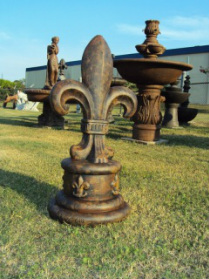
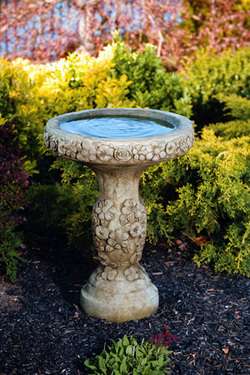
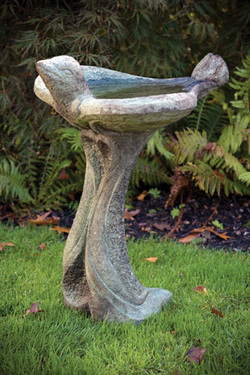
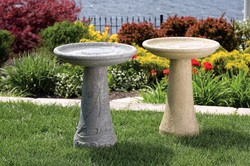
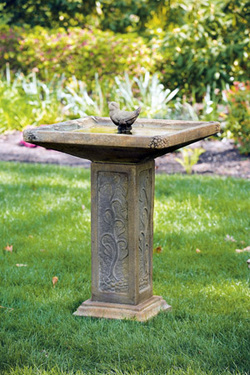
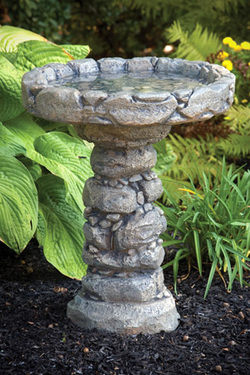
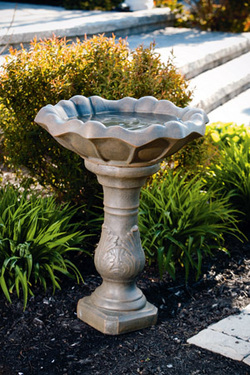
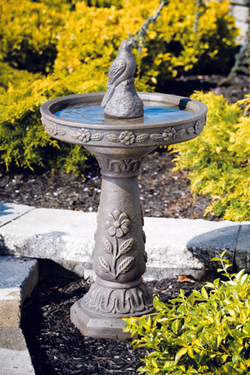
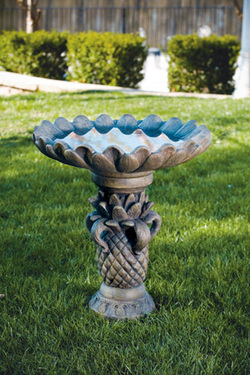
 RSS Feed
RSS Feed

